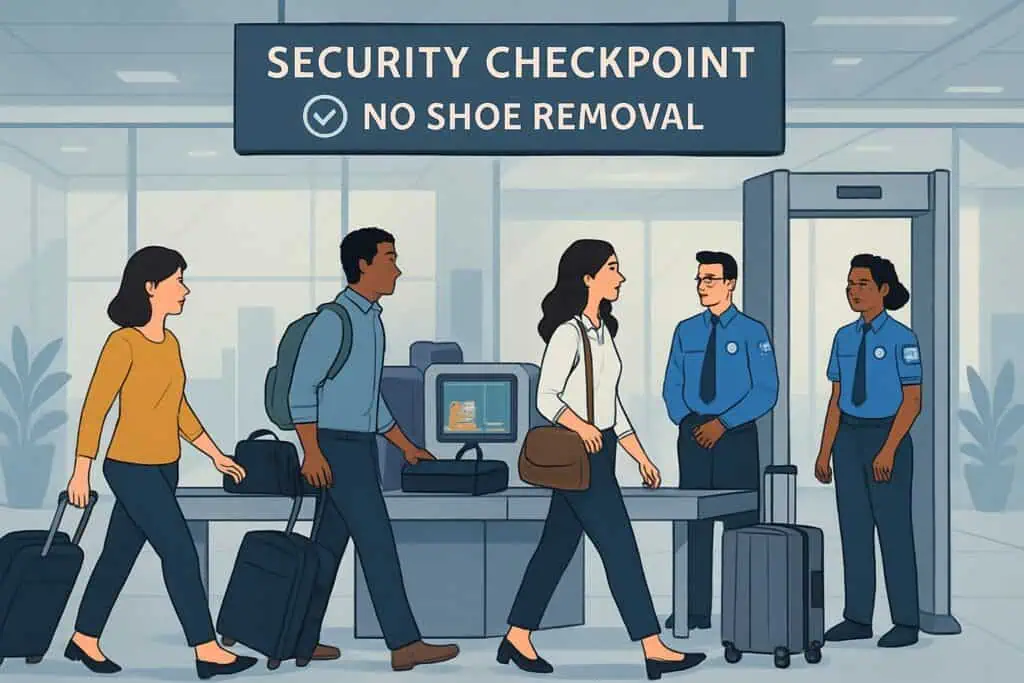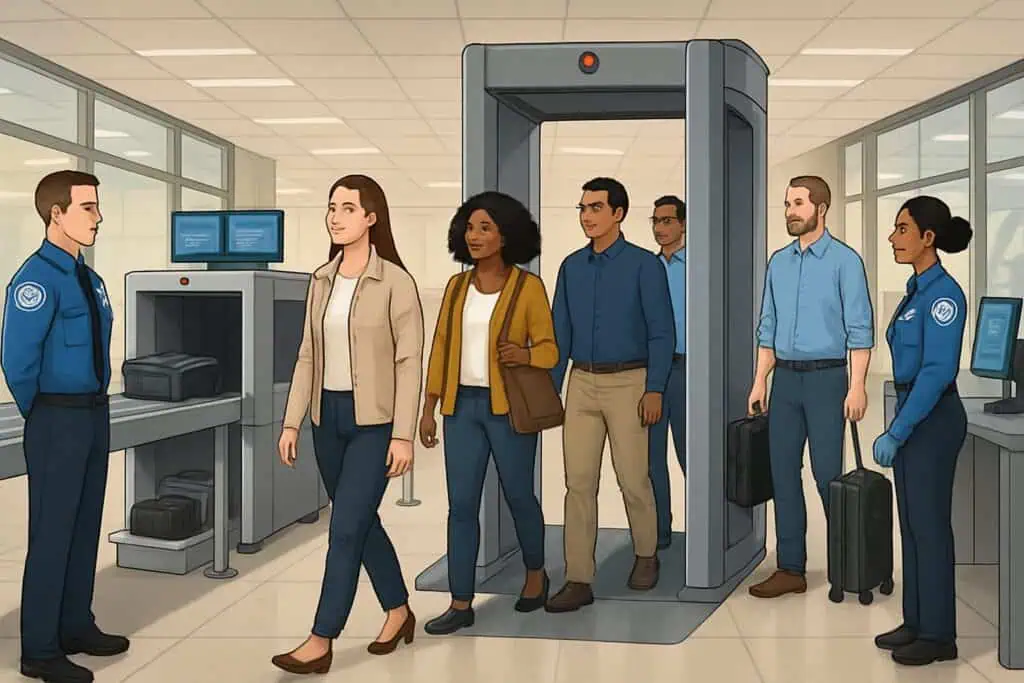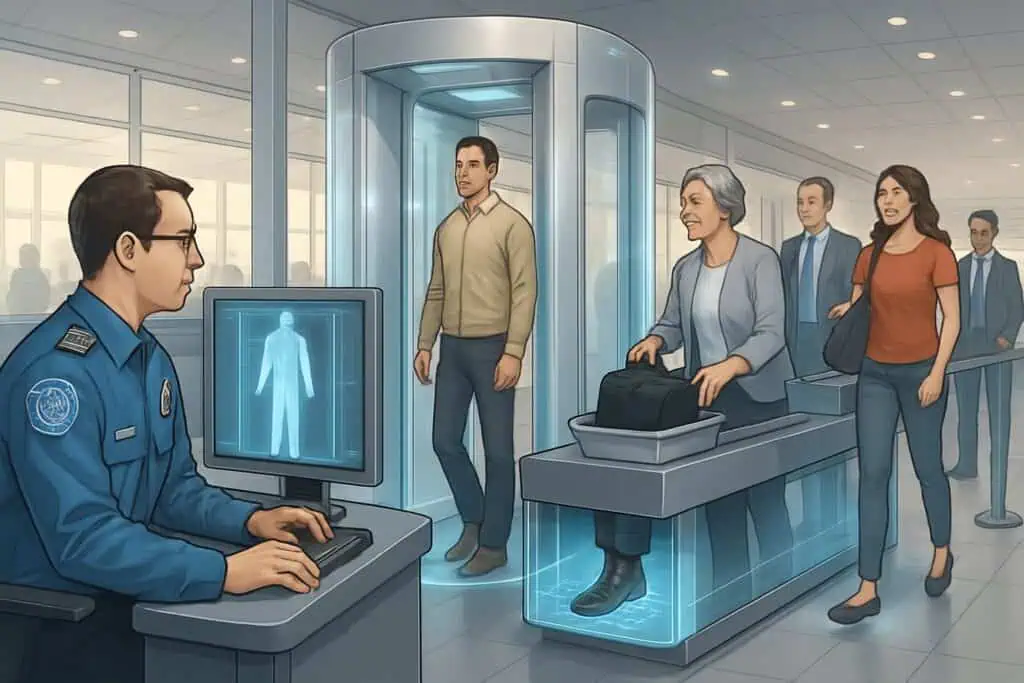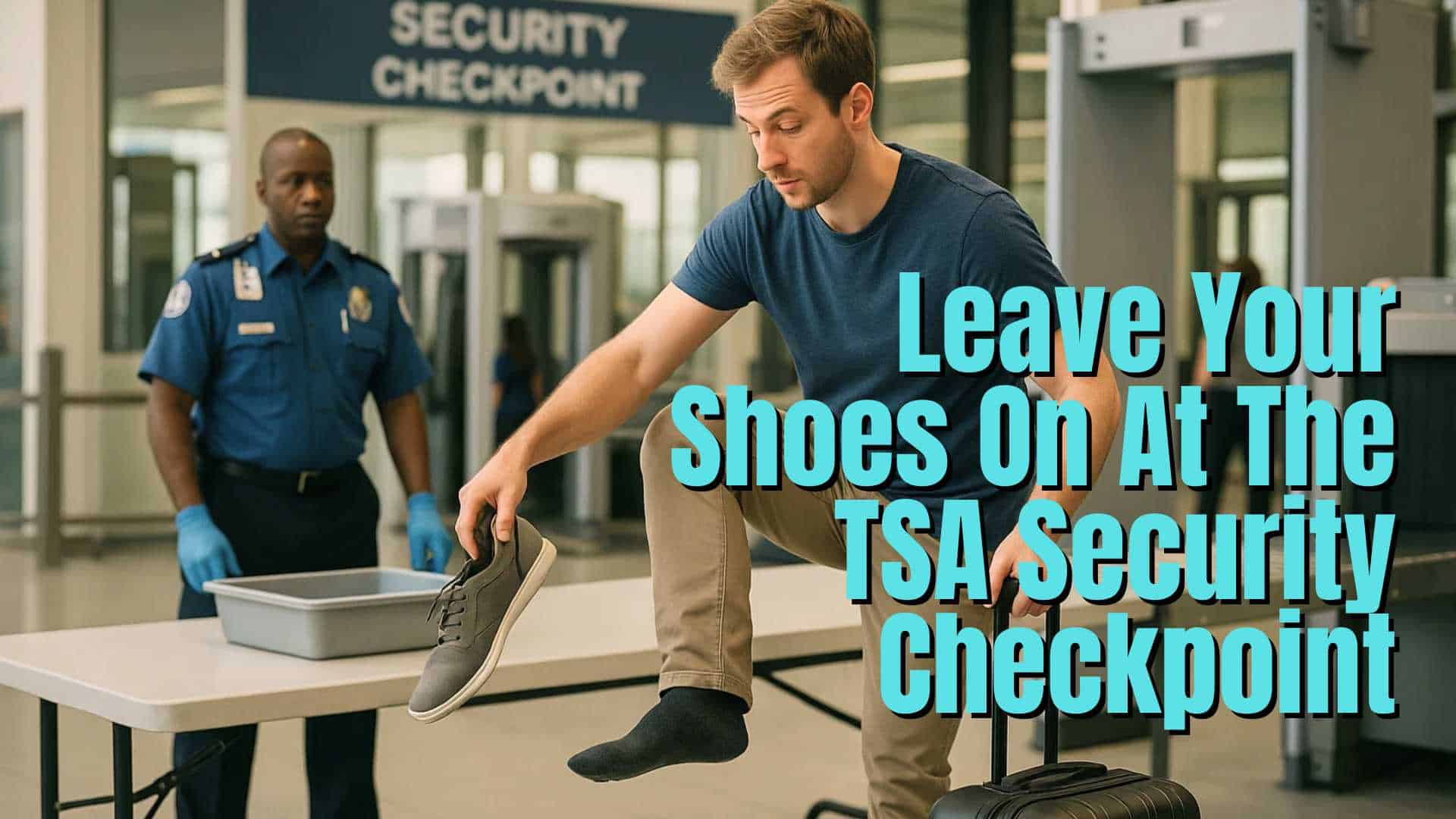Good news for travelers: you can now keep your shoes on when going through TSA security checkpoints at airports across the United States. So no more bare feet or sweaty sock shuffles through the metal detector.
The Transportation Security Administration has officially ended the nearly 20-year-old policy that required passengers to remove their shoes during security screening, effective immediately.

No more fumbling with laces, yanking off boots, or that awkward barefoot shuffle through the checkpoint. This new policy covers all domestic airports and, honestly, should make your airport routine a bit less of a headache.
So, what’s actually changing, and how safe is it? Let’s get into what’s behind this big shift, what tech made it possible, and some of the questions folks keep asking about it.
Contents
TSA’s New Shoe Removal Policy at Airport Security Checkpoints

The Transportation Security Administration just dropped its nearly 20-year shoe removal rule at security checkpoints. Now, all airports follow this update, aiming to speed things up and keep safety in check.
What Has Changed for Passengers
No more taking off your shoes at TSA security in any U.S. airport. The Department of Homeland Security announced this immediate policy change on July 8, 2025.
Secretary Kristi Noem said that TSA will no longer require travelers to remove their shoes during standard security screening. That’s the end of a policy that started in 2006 after a shoe bomb scare back in 2001.
Key changes include:
- No shoe removal for standard screening lanes
- Policy applies to all domestic airports immediately
- Some passengers may still need additional screening
This isn’t just for TSA PreCheck folks—everyone gets the benefit. That said, if you get flagged for extra screening, you might still have to take your shoes off. Nothing’s ever totally simple, right?
How the Updated Screening Process Works
Now, you breeze through security a bit faster – keep your shoes on, walk through the scanner, and you’re good. No more balancing on one foot or wrestling with boots in a rush.
TSA officials checked out the equipment at each airport and gave the green light, saying their tech can handle the change. They tweak procedures all the time, depending on threats and what gear they’ve got.
The new process looks like this:
- Put your bags and loose stuff in bins, as usual
- Keep your shoes on through the whole thing
- Walk through the metal detector or body scanner
- Grab your stuff and head to your gate
TSA PreCheck still comes with perks—like not having to pull out your laptop or liquids. The shoe rule doesn’t touch those extras.
Impact on Passenger Wait Times and Experience
Honestly, security should move quicker now. The procedure just got easier for summer travelers and beyond.
No more sitting down to untie, no more worrying about walking barefoot, and less fumbling with bags and bins. It’s a small thing, but it adds up.
Benefits you’ll probably notice:
- Lines move faster
- Less time standing around at checkpoints
- Lower stress and less hassle
- Wear whatever shoes you want—no more planning around slip-ons
With fewer people stopping to mess with shoes, lines should flow better. It’s one less thing to slow you down, especially when you’re running late or just want to get to your gate and relax.
Background and Technology Behind the Policy Shift

Back in 2006, TSA made everyone take off their shoes after a terrorist tried to sneak explosives onto a flight. Now, new scanners let security spot threats without making you go barefoot.
Why the Shoe Removal Rule Was Introduced
The TSA has been requiring passengers to remove their shoes since 2006, nearly five years after a specific terrorist incident. A terrorist attempted to detonate an explosive device hidden in his shoe while aboard an American Airlines flight from Paris to Miami.
This attack attempt made airport security officials realize that shoes could hide dangerous materials. The incident showed a clear security gap that needed immediate attention.
The Department of Homeland Security quickly implemented the shoe removal policy across all U.S. airports. This rule became one of the most recognizable parts of airport security screening.
Key timeline:
- 2001: Shoe bomb attempt on international flight
- 2006: TSA implements mandatory shoe removal
- 2025: Policy begins to phase out
Technological Advances Enabling the Change
Modern screening equipment can now detect threats while you keep your shoes on. Technology has advanced so significantly that TSA officers can detect threats while wearing shoes, which wasn’t possible in the old days.
The new scanners use advanced imaging technology. These machines can see through shoe materials to identify suspicious items or substances.
Current technology improvements:
- Enhanced X-ray detection systems
- Better image processing software
- Improved threat recognition algorithms
- Faster screening capabilities
Now, the equipment can tell the difference between a regular shoe and something dangerous inside. That’s why you don’t have to take them off anymore, at least for standard screening.
Ongoing Security Standards and Identity Verification
Security standards haven’t gotten looser—TSA and Homeland Security say they’re still looking for ways to keep things tight and improve passenger experience at the same time.
Identity checks are an even bigger part of the process now. Officers rely more on your ID and travel documents to make sure you are who you say you are.
Enhanced security measures include:
- Stricter ID verification: More thorough document checking
- Improved passenger screening: Better background verification systems
- Advanced threat detection: Multiple screening technologies working together
Your identity gets checked against several databases before you even hit the checkpoint. This layered approach is supposed to keep things both secure and convenient, though, let’s be honest, nothing’s ever perfect.
Role of Trusted Traveler Programs Like TSA PreCheck
TSA PreCheck members have enjoyed keeping their shoes on for years by paying roughly $80 for five years of expedited screening. Now regular travelers get access to this same convenience without the fee.
This change significantly affects the value of PreCheck enrollment. TSA knows that allowing standard travelers access to perks like keeping on their shoes will significantly diminish the value of PreCheck.
PreCheck program changes:
- Reduced exclusive benefits: Shoe removal no longer a premium perk
- Potential program restructuring: New benefits may be introduced
- Membership value concerns: Current members may question renewal
Trusted traveler programs will probably have to step up their game—maybe shorter lines, or more perks—to keep people signing up. Otherwise, what’s the point if everyone gets the same main benefit?
Frequently Asked Questions
The TSA will allow passengers to keep their shoes on when going through general security lines at many major airports. This major policy change affects TSA PreCheck benefits, shoe removal exceptions, and security procedures that have been in place since 2006.
What are the latest updates to TSA’s shoe screening procedures?
The TSA is ending the shoes-off policy for airport security screening at many major airports across the country. This change started on Sunday according to an internal memo sent to TSA officers last week.
You can now keep your shoes on when going through general security lines at participating airports. Previously, only passengers with TSA PreCheck could keep their shoes on in most cases.
The goal is to roll this new policy out to all U.S. airports shortly. This marks a major shift from the requirement that began in 2006.
If you set off the scanner or magnetometer, you’ll still have to take your shoes off for a closer look. Some things never change.
How does TSA PreCheck streamline the security checkpoint process?
TSA PreCheck lets you get through security faster, with fewer hoops to jump through. You keep your shoes, belts, and light jackets on—less hassle.
Laptops and liquids? Leave them in your bag. That alone saves a bunch of time compared to the regular line.
The TSA PreCheck program offers expedited access through dedicated lanes at participating airports. You go through a separate, typically shorter line.
With the new shoe rule, everyone gets one of PreCheck’s main perks. But PreCheck still lets you keep your electronics in your bag and usually has shorter lines, so it’s not totally obsolete—yet.
Who was Richard Reid and how did he change airport security checks?
Richard Reid tried to blow up an American Airlines flight from Paris to Miami with explosives in his shoes. The shoe removal policy came five years after Reid’s failed attack.
The explosives didn’t go off, and passengers plus the crew managed to subdue him until the plane landed safely.
The TSA began requiring passengers to remove shoes in 2006 as a direct response to this incident. This policy remained in place for nearly 20 years until the recent changes.
What are the differences between TSA PreCheck and Global Entry?
TSA PreCheck is for domestic airport security in the U.S. It’s $78 for five years and makes security lines less painful.
Global Entry gives you PreCheck plus faster customs when coming back to the U.S. from abroad. That’s $100 for five years.
You’ll need a more in-depth background check and an interview for Global Entry. PreCheck’s application is simpler and quicker.
Global Entry works at select airports with those automated customs kiosks. TSA PreCheck is accepted at security checkpoints all over the country.
How can passengers prepare their footwear for airport security checks?
Pick shoes you can slip off quickly, especially if you end up needing extra screening. Honestly, slip-ons beat boots with laces—no one wants to wrestle with knots in line.
Skip shoes loaded with metal bits; those almost always set off the detectors. And yeah, empty your pockets before you hit the scanner—saves everyone time.
Try to keep your shoes clean and free of anything odd. TSA agents might pull you aside if your shoes look out of the ordinary.
Throw on some socks, just in case you have to go barefoot through security. It’s not just about comfort—it keeps your feet off those airport floors, which, let’s be real, aren’t exactly spotless.
Are there exceptions for removing shoes at airport security for certain age groups or conditions?
Kids 12 and under usually get to breeze through security without kicking off their shoes. That’s been the rule for a while now, and honestly, it makes things a bit less stressful for families.
Adults 75 and up can often keep their shoes on, too. Still, if something sets off the scanner, security might ask them to take their shoes off anyway—just depends on the situation.
If you’ve got a medical condition or disability, TSA can work with you to make screening easier. It’s a good idea to reach out to them before your flight to talk about what you need.
These days, though, a lot of airports let most people keep their shoes on, no matter their age. The age rules don’t matter as much as they used to, especially at places with updated screening.

I have been traveling around the world by air since the early 70s and living overseas too. I worked for British Airways for a number of years and I am also a private pilot. About Me


